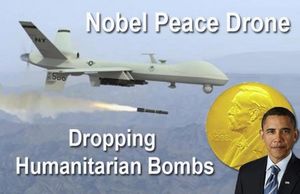
© Tristan Ferne
Arctic tern chick outside its nest in Iceland, July 1, 2014.
When the days grew long, seabirds flocked to this hamlet on the edge of the Arctic to rear their chicks under the midnight sun. "Kria," shrieked the terns, calling summer up from the slumbering ground. Black cliffs were transformed into snowbanks of white kittiwakes. Puffins whirred between land and sea. Murres plied the shoreline, fulmars patrolled the skies. Everywhere sounded their vibrant chorus.
These days, a scatter of stubborn holdovers streaks the sky and paddles the bay, but the legions are gone. The chicks have perished, their bereft parents have returned to sea.
Half of Iceland's seabirds nest on this low-lying volcanic outcropping and its neighboring islands in the deep west coast gash called Breidafjordur Bay. Flatey Island used to be covered with chicks snuggled inside rocky hillside burrows, under tall meadow grass, in nests strewn across headlands and shores.
"There were thousands! You could hear them," says Olina Jonsdottir, who has lived on this island with her husband, Hafsteinn Gudmundsson, nearly 50 years. She looks out her living room window, past the sheep grazing on knuckles of grass-covered lava, past the black basalt beach, to the few birds drifting over the water beyond. "You can't do that anymore. Now there are so few."
Iceland, circled by the food-rich currents of Atlantic, Arctic and polar waters, is the Serengeti for seabirds. Its rocky coast, hillocky fields and jutting seacliffs are breeding grounds for 23 species, hosting an indispensible share of Atlantic puffins, black guillemots, great skuas, northern fulmars, razorbills, black-legged kittiwakes and more.
But the nests have gone empty in the past few years, and colonies throughout the North Atlantic are shrinking.
The suspected culprits are many: The leading candidates are the profound changes underway in the world's oceans - their climate, their chemistry, their food webs, their loads of pollutants.
Warming oceans and earlier thaws are driving away the seabirds' prey, unleashing deadly, unseasonal storms and knocking tight breeding schedules off-kilter. Mounting carbon dioxide absorption and melting glaciers are acidifying and diluting the aquatic balance, jeopardizing marine life and creatures that depend on it for food.
Alarmed scientists have returned from fieldwork throughout the North Atlantic with sobering descriptions of massive chick die-offs and colonies abandoned with eggs still in the nests.
"Mass mortality of kittiwakes is evident," said Freydis Vigfusdottir, a post-doctoral researcher at the University of Exeter in Cornwall, England. "You can see in the late summer lots of 'chick pancakes' in the nest."
And in the Arctic tern colonies she's studied, "there are just dead chicks everywhere," she said. "Not only do you have to provide your field assistants with food and shelter, but also some psychological help after many, many days of collecting dead chicks."
Total Breeding Failure
On Flatey Island, the once-prolific terns haven't produced viable chicks in more than a decade. More than half of the region's black-legged kittiwake nests vanished over 15 years.
And on the Westman Islands off Iceland's south coast - home to the world's largest Atlantic puffin colony - breeding has been a "total failure" since 2005, according to the South Iceland Nature Center. The impacts are being felt throughout the country, where these clown-faced birds have been both a legally-hunted delicacy and a national mascot. "Puffin watch" - news on how things are going in the burrows each summer - is as popular here as "volcano watch."
Similar trends are reported in Scotland, the Faroe Islands, Norway and across the circumpolar north - the principal nursery for Northern Hemisphere marine birds. Most of the biome's species, the 2013 Arctic Biodiversity Assessment finds, are in decline.
Whole populations haven't collapsed - at least not yet. These hardy seafarers are long-lived, and millions of them still sail the North Atlantic. Normally, seabirds can withstand a few bad breeding seasons. However, reproductive failures have been going on for so long now that scientists say it's just a matter of time before the adults, too, are gone.
Now researchers are struggling to comprehend the catastrophic breeding failure and its implications for an ecosystem that is fundamental to the planet's health.
The seabirds' plight "is a huge concern ... not just in the North Atlantic but also globally," Vigfusdottir said. The cold waters of the North Atlantic are a major driving force for the Earth's weather and among the most productive fisheries in the world, so the birds' problems could indicate trouble for the region's major industry and the global food supply.
These same problems also are now being noted in wading birds like redshank, shorebirds like red knot, and other waterfowl in the northern United States, United Kingdom and elsewhere.
"What is happening in Iceland, we see happening in so many other areas in the North Atlantic. And the fact that we're seeing them over such a wide area points to a common factor ... and that is climate change," said Aevar Petersen, a retired Icelandic Institute of Natural History ornithologist.
Winds and currents funneling pollution northward from Europe, North America and China bring more bad news for seabirds preying high on the food web. Mercury, which damages birds' brains and reproduction, is ubiquitous - and rising fast in some areas. Brominated flame retardants, perfluorinated coatings, pesticides, plasticizers, polychlorinated biphenyls and more are contaminating a variety of species and locations. And masses of chemical-laced microplastics could be released by melting ice sheets.
Seabirds "are critical for detecting changes that are happening even more rapidly than we suspected," said Jennifer Provencher, a Ph.D. student at Carleton University in Ottawa who examines colonies in Arctic Canada. "We are getting basically a year-to-year-to-year update of the health of the oceans and the health of the environment through these seabird studies."
It's likely all these threats are adding up, she said, sounding a warning across the north. "They're alarm bells, in real time, of changes that are going off."
Read the rest here.






